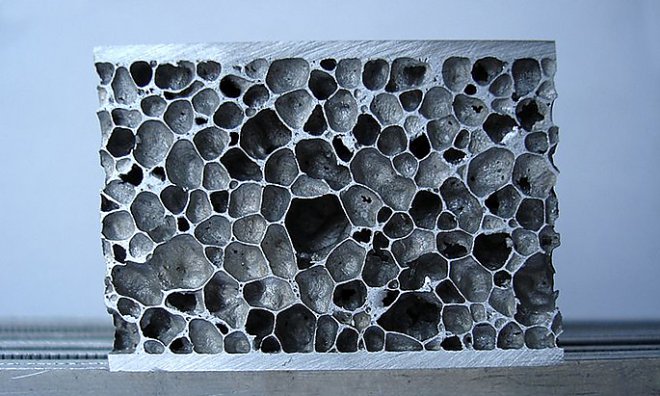Metal foams are capable of shielding various types of radiation and even stopping armor-piercing bullets.

Metallic Foam
Composite metallic foams (CMF) are strong enough to stop an armor-piercing bullet and turn it into dust upon impact. Given that these foams are lighter than metal plating, the material has obvious advantages for creating new body types and car armor - and this is only the beginning of its potential use, phys.org reports .
The experiment was conducted by researchers from the University of North Carolina under the direction of Avsane Rabieyei, a professor of aircraft and rocket science, who spent years developing and researching the unusual properties of CMF. The material itself is a composite foam metal in which the middle layer is a foam metal (energy absorber from hollow metal balls on the same metal substrate), and the outermost layer is made of ceramic. In the video, the scientists fired an 7.62 mm armor-piercing bullet into a product made from this composite and the result is impressive:
“We were able to stop the bullet with a material less than 2.5 cm thick, while the recess in the place where the bullet hit was a depth of less than 8 mm. For example, according to the standards of the National Institute of Justice, the armor is considered good, even if a 44 mm notch remains in it, ”says Rabieyei.
Also, lightweight composite metal foams are effective in blocking x-rays, gamma rays and neutron radiation. The results obtained mean that metal foams are promising for use in nuclear safety systems, astronautics, and can also be used in medicine.
The material in its properties turned out to be better than most others in terms of protection from X-rays, although not as effective as lead.
“However, we work by changing the composition of the metal foam so that it becomes even more effective than lead in blocking X-rays, and the first results obtained are very promising,” says Rabieyei. “Our foams are non-toxic, and therefore easier to manufacture and dispose of. In addition, the unusual mechanical and thermal properties of these composites and their ability to absorb energy make this material a good candidate for applications in the field of nuclear energy. ”
